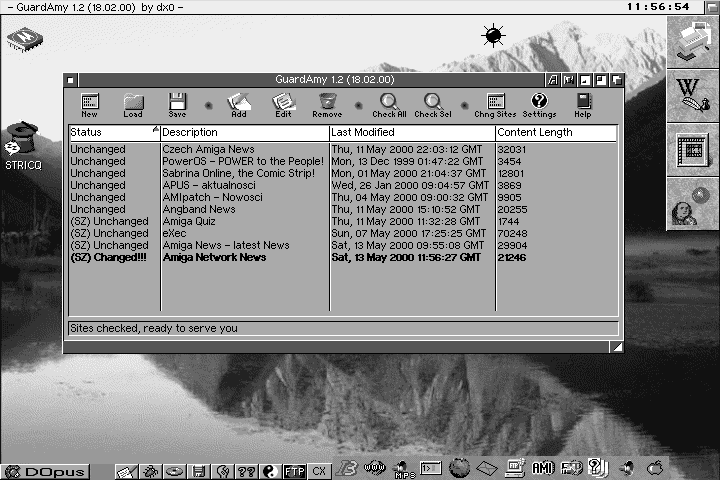When I was walking though Prague with my beloved wife the world was celebrating 25th anniversary of Commodore Amiga.
First time I met Amiga in early 90’s. My friends had Amiga 500/500+ models and another one (Rafał Kotyński) just bought Amiga 1200 to replace ageing Commodore 64. And due to him I got impressed by power of AmigaOS and how much things could be done on limited resources.
In September 1995 I bought Amiga 600. It was old at that time but allowed to connect hard drive which I bought on 10th October same year. Why I remember that date? My A600 lacked RTC so each time I booted system it set date of creation of system partition as current one. With 1MB of RAM and ~400MB of storage it was nice platform to learn programming.
My first application was written in High Speed Pascal and it was very simple antivirus as lot of my files was infected with “Happy New Year 1996” crap. I remember that I compared clean and infected file, disassembled both and removed all entries to virus code. Some time later I got Virus-Z and it cured whole system.
After few years I sold a bit upgraded version (2MB ram) and kept hard drive for Amiga 1200 model. New hardware, new possibilities. Faster cpu, more graphics capabilities which I did not used because my primary display was still 12” green monitor which I used with my 8bit Atari 65XE in a past. 704x260 resolution was not so great so when something got broken again I bought “new” display for my machine: 14” vga mono monitor. Move to 720x480 in 16 shades of grey was big change.


I selected all shades to follow MagicWB colour scheme as much as it was possible and converted wallpapers using script in ADPro. Effect was nice and usable.
For most of time I used this computer for programming, entertainment and many others but games (which for many people were main reason to buy Amiga) never took most of my time. There were two exceptions: Civilisation and Angband (including variants). Those took me hours and hours.
What I liked in Amiga was operating system. When it appeared on market there was MacOS, Atari TOS and Microsoft did not yet had usable Windows released. Many things were great:
- multitasking — before it was only in Unix systems
- DataTypes (think “codecs” for any kind of data — open/save files in different formats without having to use lot of libraries)
- localisation — currently *.po files shows that idea was right
- flexible partitioning scheme - no /dev/sdaX, no C: but partitions which could have own names (DH0: by default, SH0: on my system) and filesystem labels (Boocik:, Szafa: were what I used)
- Magic User Interface toolkit — user could configure look & feel at a level which no other UI toolkit ever provided
- assigns — all fonts resided in Fonts: but this could be a list of directories (something like $PATH but more advanced)
- ability to replace any library call with own code — this gave a possibility to improve system behaviour in a ways which authors never thought about
- screens — hard to describe for those which never used — extra desktops for use with applications does not even give half of it
- RAM disk which took only required amount of memory
- Reset proof fixed size RAM disk (which could be used as system boot drive)
- two stage icons with application configuration stored inside (in tooltypes)
- comment field in filesystem for any object
- XPK and XFD libraries which allowed to (de)compress any kind of data with any available method
And lot more.
I wrote few applications for AmigaOS. Some of them became popular and I was able to expand my computer with addons with money which I got from registrations (yes, I wrote shareware program). It started with 68000/1MB ram when I had to close code editor (great CygnusEd) to be able to compile to 68040 cpu with 64+2MB of memory at the end. AmigaE was language which was both easy to use and powerful to write programs never mind how complex. Add few libraries to it and you can do anything. Today even ‘hello world’ takes few kilobytes on my Linux system ;(
I could buy 386sx instead of Amiga 600 but then all I would learn would be how to do things in MS DOS or MS Windows 3.x as there was no x86 people around which would use Linux, BSD or OS/2. This would be lost years as now after few years of using AmigaOS I know what good operating system can give to hardware when resources are very limited.
A dla tych, co dotarli do końca polecam także post napisany przez Opiego.